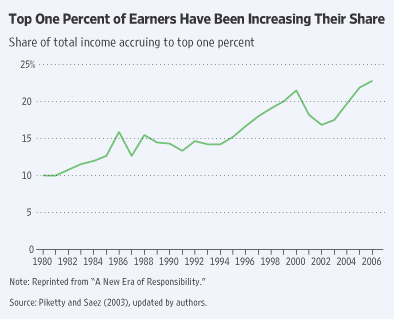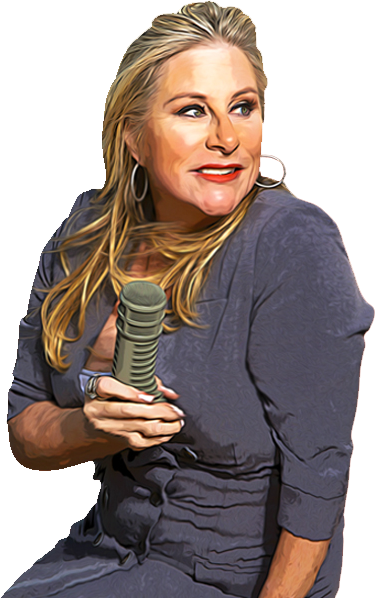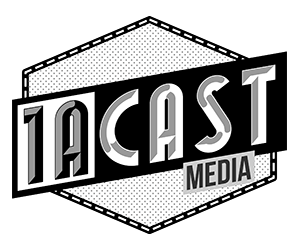 The WSJ here (see scroll RSS feed to the right) is the “earning curve,” if you will. It shows that the people who are the highest earners have increased their share of earnings. In Obamanomics parlance that means that they’re taking too much from the economy and he’s going to redistribute it (for a description on how he plans to do that see Joe the Plumber here and his “stimulus” bill).
The WSJ here (see scroll RSS feed to the right) is the “earning curve,” if you will. It shows that the people who are the highest earners have increased their share of earnings. In Obamanomics parlance that means that they’re taking too much from the economy and he’s going to redistribute it (for a description on how he plans to do that see Joe the Plumber here and his “stimulus” bill).
Dan Henninger calls this graph by two French economists Obama’s “Rosetta Stone.”
He untangles the meaning of it here:
Turn to page five of Mr. Obama’s federal budget, and one may read these commentaries on the top 1% datum:
“While middle-class families have been playing by the rules, living up to their responsibilities as neighbors and citizens, those at the commanding heights of our economy have not.”
“Prudent investments in education, clean energy, health care and infrastructure were sacrificed for huge tax cuts for the wealthy and well-connected.”
“There’s nothing wrong with making money, but there is something wrong when we allow the playing field to be tilted so far in the favor of so few. . . . It’s a legacy of irresponsibility, and it is our duty to change it.”
Mr. Obama made clear in the campaign his intention to raise taxes on this income class by letting the Bush tax cuts expire. What is becoming clearer as his presidency unfolds is that something deeper is underway here than merely using higher taxes to fund his policy goals in health, education and energy.
The “top 1%” isn’t just going to pay for these policies. Many of them would assent to that. The rancorous language used to describe these taxpayers makes it clear that as a matter of public policy they will be made to “pay for” the fact of their wealth — no matter how many of them worked honestly and honorably to produce it. No Democratic president in 60 years has been this explicit.



